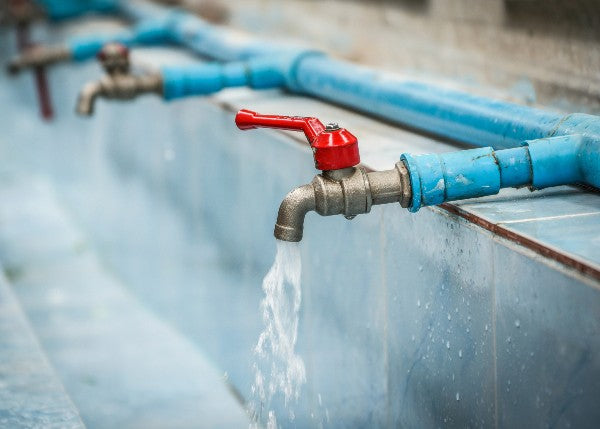Many are aware of the Flint, Michigan water crisis that began in 2014 that impacted the United States on a national level for years following the beginning of the crisis. When the city of Flint decided to switch the water supply source from the Detroit water system to the Flint River several factors were unaddressed that would have prevented or minimized the widespread impacts. One of the factors that contributed to the crisis was inadequate pre-filtration. The river water source introduced higher levels of lead and bacteria. The pre-filtration system in place at the time was not capable of capturing and reducing these contaminants.
The effects of the crisis in terms of scope and reach may very well be incalculable, especially when the health impacts and cost of health care treatment are considered. Yet, many news outlets estimate the year-to-date cost as exceeding one billion US dollars. That number may continue to climb as the days, months, and years progress.
Were the potential cost-cutting, cost-saving measures worth it? The answer to the rhetorical question is a resounding NO. This is an extreme example, yet it clearly highlights the importance of pre-filtration in liquid filtration and treatment systems. Forgoing pre-filtration or incorrectly applying or maintaining a pre-filtration system is a mistake a company, organization, or individual cannot afford to make.
Pre-filter with a Purpose:
The primary purpose of pre-filtration in a fluid conveying system is to protect the downstream filter and components from damage, degradation, and premature failure. Installing a pre-filter will, in most cases, reduce contaminants, dust, dirt, and debris from circulating in a fluid system and fouling up critical components in the system. For critical systems such as public water supplies, high-purity water and fluid systems, pharmaceuticals, petroleum, manufacturing, and food and beverage, pre-filters are essential for protecting these systems and the fluids they convey. Component failure in these systems can be incredibly costly as demonstrated above, and yet on the other hand, a properly designed, specified, and installed pre-filter can assist in preventing these failures altogether.
In addition to safeguarding downstream filters and system components, properly applied pre-filtration can also enhance end-use fluid quality, enhance system efficiency, reduce system downtime, and reduce customer callbacks and complaints. For critical fluid systems, the question should not be ‘Why should we install a pre-filter?’. Instead, the question should be ‘What kind of pre-filter should we install?’.
Types of Pre-filtration Methods:
Three of the most common pre-filtration methods in fluid systems are strainers, bag filters, and cartridge filters. Each has its own strong suit. An understanding of the system type and requirements will go a long way in establishing the best method to utilize.
Strainers
Depending on the system type, fluid media conveyed, and filtration requirements, utilizing a strainer may be the correct first choice in line for pre-filtration. There are several key factors that will signify whether a strainer will be the appropriate pre-filter to use for a particular application. Strainers are designed to remove large particles, sediment, dirt, and debris before they can reach downstream filters, components, and equipment. Additionally, strainers often have a low-pressure drop. This is an important factor for systems where constant flow or maintaining a minimum flow rate is required. Strainers are also cost-effective and have a simple and durable design making them a great choice for high-flow, high-pressure applications. An additional advantage of a strainer is its relative ease of maintenance. This helps to reduce maintenance costs and system downtime during regularly scheduled service.
Bag Filters
Bag filters are typically well-suited for pre-filter applications requiring high-volume fluid flow operations because of the large surface area design. The large surface area typically lends itself to a large dirt-holding capacity while not impeding the system flow which makes bag filters an excellent choice for high-flow and high-particulate applications. Additionally, many bag filters, by the nature of their construction, ensure that the filter media has minimal contact with the fluid, which reduces contamination and media degradation. Bag filters are typically more cost-effective than other pre-filter methods for high-flow, high-particulate applications, making them an attractive option and budget-conscious solution.
Cartridge Filters
Cartridge filters are typically the pre-filter of choice for applications that require a high level of particulate removal. Cartridge filters have a high filtration efficiency when compared with other pre-filter methods. The finer filter media, which is a hallmark of cartridge filters, make cartridge filters a good solution for removing small particles and contaminants from the fluid stream. Additionally, cartridge filters have a smaller footprint than other pre-filter methods which makes them a better choice for systems with limited space.
Benefits and Importance of Pre-Filtration:
The benefits of pre-filtration are tremendous. As stated above, a pre-filter is of primary importance in a liquid system by preserving and protecting downstream filters and components from damage and premature failure, thereby enhancing system life and reliability. Likewise, because system components are protected from damage and premature failure by an appropriate pre-filtration solution, system maintenance costs are reduced. Additionally, by selecting the correct pre-filtration method, the system filtration efficiency and overall system efficiency are increased. Pre-filters capture larger debris and contaminants and allow downstream filters to be selected for a specific range of particle size, allowing each stage of filtration to do its part as designed. Also, when large debris is captured by pre-filters, downstream clogs, and their associated pressure drops are eliminated, leading to better fluid flow and system efficiency. Increased filtration efficiency will directly correspond to increased fluid product quality and enhance customer and user experience.
Further, the right pre-filtration will improve system safety, reduce downtime, increase production capacity, reduce waste, improve adherence to regulatory requirements and standards, reduce environmental impact, improve life-cycle and life-cycle costs, and more. As alluded to before, the benefits are endless. So again, the question to consider is not whether a pre-filter is needed but what type of pre-filter is needed.

